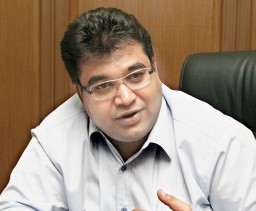
Now that the margins are constantly shrinking many exporters have realized the folly of chasing top-lines and strategies have been put in place to run the factories ‘profitably’. Team StitchWorld recently met five exporters in Bangalore, all with a turnover of more than Rs. 100 crore who have streamlined their operations to give good returns. The profile of the five companies – Bombay Rayon Fashions Ltd. (BRFL), Mandhana Industries Ltd., Texport Overseas, Indian Designs and Radhamani Group – is distinct and the working styles are also different, but what binds them together is the determination to ‘just not run a factory, but run it profitably’. While all five of the companies admitted that their cash flow position is good and they are keeping a close watch on their ‘costs’, the strategy that they are following to remain profitable is specific to the company, their client base and product profile…
Bombay Rayon Fashions – Building Capacities for Larger Volumes
“We do not think on short-terms… all our investments are made keeping a focus on returns five years down the line,” says Aman Agrawal, Vice Chairman, Bombay Rayon Fashions. BRFL has surprised many in the industry by investing in 28 digital printers in one go, which they claim is the largest installation of digital printers in the world. The target is to have 500 machines to achieve economies of scale and the cost at par to rotary printing.
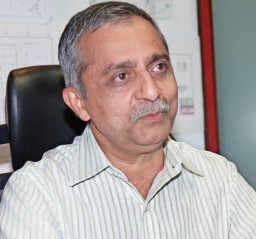
Every business in the chain for BRFL, whether it is spinning, weaving, button manufacturing, sewing threads or garmenting is a profit centre in itself and the advantage is not price, but on commitment and deliveries. Not scared of investments, the company is building huge capacities over the complete supply chain, waiting for the market situation to improve so that they are already geared with capacities, specialized machines and accessories.
The DNA of the company supports large volumes and the focus area for the next few years is garmenting with capacities coming up for denim wear and knits. “As of now we have a capacity of 50 tonnes per day in knitted fabric and with Tirupur taking a beating, it is the right time to enter the fray,” argues Agrawal. In Denim, the company has no immediate plans to manufacture fabric, but denim garments are a priority. The new factory will take the production capacity in denim wear from 800 pieces per day to 25,000 pieces per day. The factories are coming up in different locations in Maharashtra and Karnataka and while some of them are in villages, Agrawal believes that going completely into the interiors is not the right strategy.
“The culture to support global business is missing and it is difficult to sustain a factory long enough to build the culture, so it is better to invest in areas that already have a strong garmenting culture,” he opines. The next step could be backward integrating into cotton farming.
Mandhana Industries Ltd. – Product Development the Core of Growth
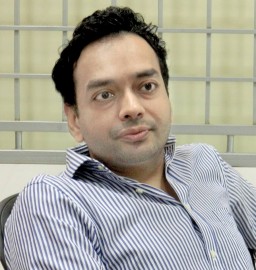
Mandhana Industries is building factories specific to products to get the best efficiencies. “We have products that run into 67 to 90 stations; so the handling time is very high, but the advantage is that Bangladesh is not our competitor and we are evaluated only on our product and delivery strength,” says Piyush Vyas, COO, Mandhana Industries.
The secret behind a strong product profile matching client profile is the strength of the merchandising segment, which according to the company is often a neglected area in garment manufacturing. While much effort is made to tighten production, in reality it is the skills of the merchandisers, which is the key to understand the customer and develop products to his exact preference. Working on smaller runs the company feels that being integrated is a major advantage. Having already invested in spinning last year, the company is concentrating on its two new garmenting units in Tarapur and Baramati to increase its production capacity three-fold from the current 4 million units per annum to a total of 12 million units per annum.
Texport Overseas – Tight Control over Production Planning
[bleft]Bangalore homes many progressive companies… distinctly different in working culture to the products they make when compared to other apparel manufacturing centres. While all the five companies interviewed admitted that their cash flow is good, close watch is kept on the operating costs and process optimisation is being done continuously for better results. [/bleft]
“Setting up infrastructure is only 10 per cent of the job; the rest is how you run it on a daily basis. For us strong operational controls and better man-management is the key to stay healthy,” says Samir Goenka, Director, Texport Overseas. In 2011, the company adopted lean manufacturing systems and has achieved a man-machine ratio of less than 1:1 bringing down the workforce by 5 per cent. The company has kept the attrition rates minimal by ensuring that the workers get work all 365 days and no one is laid off. The secret behind this is immaculate planning of operations and having style changes organized three months in advance so as to constantly feed the lines.
Further, it is made sure that salaries are paid on time and calculations for overtime are accurately and honestly calculated. The company works predominantly with US buyers, as they prefer to work with larger quantities.
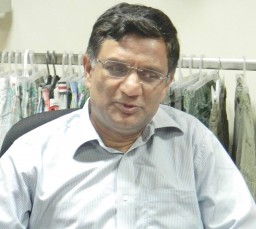
Naseer Humayun, MD, Indian Designs
For the company offering better fabric, better accessories, more detailed sewing in garment, more processing in garment, both in dry and wet processing, all of which takes them up the value chain, adds to the bottom-lines.
Growing at 15 to 20 per cent YoY, the challenge for the company is not only growing top-lines, but proportionately growing bottom-lines. With total 10 units, Texport’s unit value realization has gone up by 20 per cent. “With a mix of basic and high-end products, we can service our customers as a full package,” says Samir.
Indian Design – Involving people in the Growth Strategy
A conscious decision was taken three years ago to change the structure of the company and make it more buyer responsive, this drive included increasing capacities, putting all operations under production planning solutions using FastReact, building forward and backward integration chains with vendors and working more aggressively on employee engagement. The company claims that 99 per cent of times they have fulfilled orders on time in the last few years, which has made them a preferred supplier for many buyers.
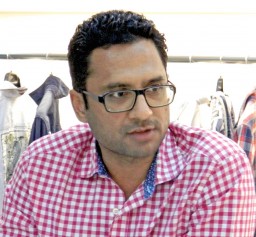
“We have the flexibility to give large runs and small quantities as per our buyer’s need; also our buyers from various countries and market segments, addressing different retail formats, so the changing market conditions do not impact us as much,” reasons Naseer Humayun, MD, Indian Designs.
With a turnover of over Rs. 290 crore, the company is targeting Rs. 350 crore turnover in the next financial. The confidence comes from the appreciation that it is receiving from its buyers. Though two new units are already in place, plans for another unit is already in the pipeline and the site is decided upon.
Apart from the various tangible incentives roll-out under the extensive HR policy, the company also imparts training, organizes outstation trips, provides scholarships to worker’s children and since more than 80 per cent of the workforce is females, special care of pregnant women is also taken care of at the factory. Health benefits (ESI and Mediclaim) to employees and gratuity after retirement/resignation to employees who have completed minimum 5 years’ of service are also included. For the company, it is all about making workers feel a part of the organization and inculcating a sense of ownership.
Radhamani Group – Riding High on Product Standardisation
A niche player in the market, Radhamani Textiles is working directly for some of the most product focused companies in the world including Tom Tailor, Gaastra, Napapijri, River Island, Zara man and boys, Jules, Camp David, s. Oliver to name a few and even has its own brand POE. “From the colour palette to value addition to detailing, are evaluated for each individual buyer and collections created keeping their market segmentation and positioning in mind,” says Manish Poddar, Director, Radhamani Textiles. This deep intervention in design has resulted in the company already hitting an average realization price of $ 10 per piece, and which is expected to go up to $ 14 next year, a way above the industry average of around $ 4 per piece. The ROI on the product development registered by the company is 85 per cent.
This Rs. 135-crore company has a consolidated manufacturing facility at a 10 acre site near Bangalore with a manufacturing capacity of 3 million pieces a year. With specialization in men’s shirts, Radhamani Group has achieved a very streamlined and optimized manufacturing setup, due to product standardisation based on a system which the Italians call RELOOK and which has been implemented in their internal order processing, buying and production monitoring ERP system. “The core of our shirt manufacturing setup is that we have recognized all the criticalities which cause delay or hamper the final assembly, and due to the same, our style changeover time is nil, we don’t have an industrial engineering department neither a sampling room as all the SOPs are already in place,” explains Manish.
All the aspects of embroidery, printing, variation in some specific panel like yoke attaching and labelling or anything similar, is done before all the sewing work. And all this has been made possible with the help of the innovative ‘Baby-Bag Mother-Bag’ bundling system, in which no pattern or panels are bundled or tied together, rather put in bags with barcodes. This system helps in fool-proof bundling as only after scanning the respective barcode of the baby bag and the mother bag, the latter would be put into the former, this also helps in precise job allocation.
Due to this system neither of the department is underutilized nor over-utilized at any instant of time. With this system their assembly line of 11-16 operations, on conveyer maintains a throughput of 700-800 pieces in a day. The in-house capacity for printing, embroidery, garment processing and laundry supports the fast production, as they don’t have to outsource any of these value adding processes.






